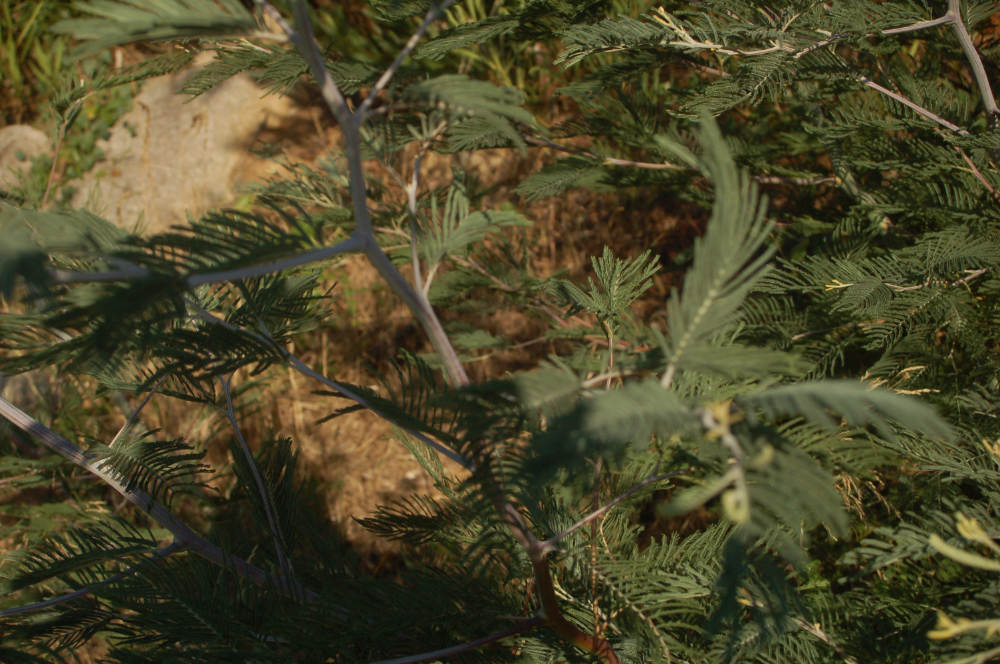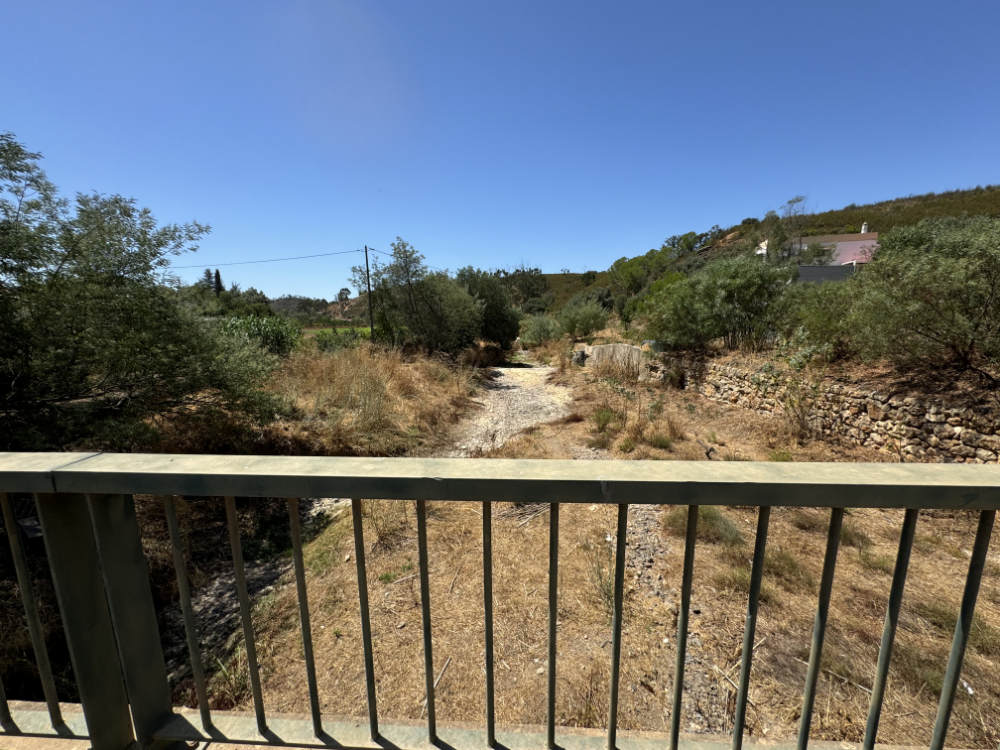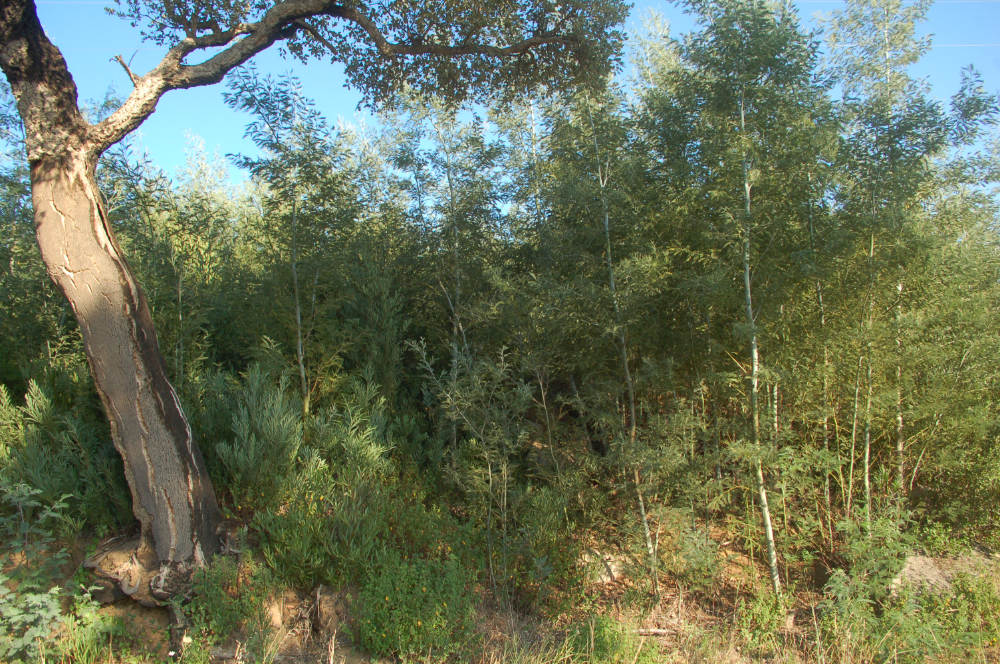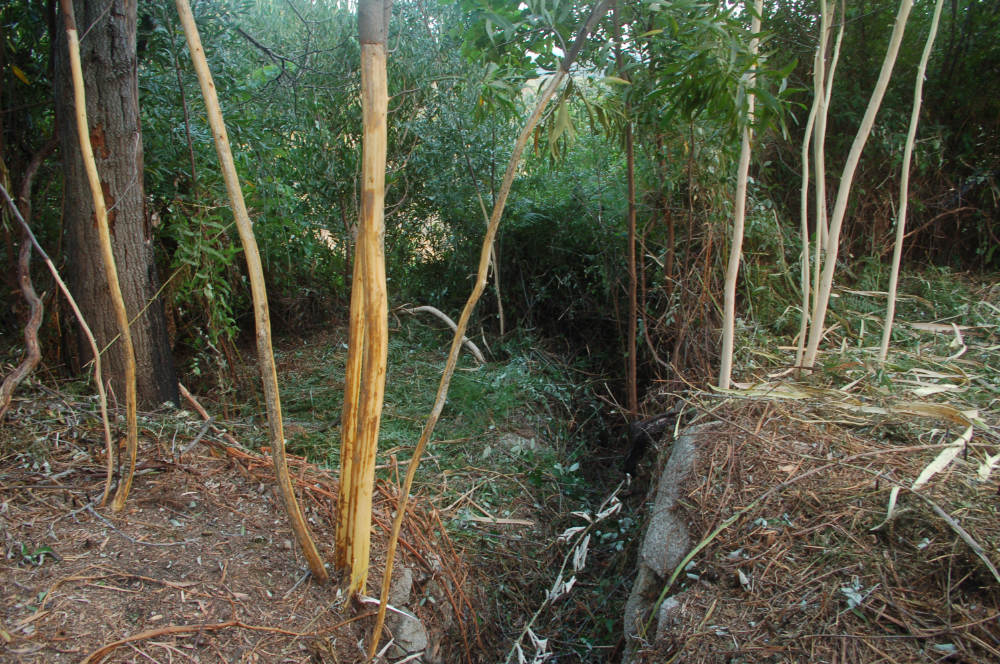Saturday 10th August 2024.

In the southernmost mountains of Portugal, the groundwater is beginning to run out. Monchique’s springs and streams have already dried up. The situation has never before been as drastic as it is this summer. At the end of July, ECO123 contacted the Institute for Nature Conservation and Forests (ICNF) in Lisbon and asked to be informed about the emergency measures that the authority has in place for dealing with this situation.
Since the forest fires of 2018, there has been an explosive growth in the spread of invasive trees, with acacias and mimosas now engulfing an area of over 400 km2. Native tree species, such as cork-oaks and carob trees, are being eliminated by these invaders, and the soil’s water balance is being seriously upset; the region’s streams and wells are drying up and acacias and mimosas are growing in their beds. Monchique now receives its water from the Alcantarilha Gare water station of Águas do Algarve, which means that it has to be pumped up into the mountains from Portimão. Are these invasive trees the reason for this state of emergency in the water supply?
ECO123 would like to know what the ICNF’s position is on the issue of invasive tree species and what it intends to do to stop their spread? What techniques can residents use to stop them spreading even further? Are you in contact with the local authorities in the region? And are you aware of the scale and seriousness of this problem?
ANSWER ICNF to ECO123 1-8-2024:
In general, acacias, and especially mimosa (Acacia dealbata Link.), benefit from disturbances to the ecosystems, whether these are caused by fires or frequent cutting.
In years when the burned area (due to forest fires) is large, as, for example, in 2003 and 2018 in Monchique, there is a tendency for the area occupied by these species to increase in the short term.
The problem of invasive species is widespread throughout Portugal and is not specific to the Serra de Monchique. It is through the National Forest Inventory (IFN), a statistical and cartographical process designed to assess the abundance, state and condition of national forest resources, that we are able to obtain accurate data and information, indicating, among other things, the occurrence and density of tree species.
In the Algarve region, the IFN data estimated that, for the years 1995, 2005, 2010 and 2015, the total area occupied by acacias (of all species occurring in this territory) was less than 200 hectares (less than two km2). The next forest inventory, which is expected to start soon, will make it possible to update these data.
The proliferation of invasive species that threaten ecosystems, habitats or species, especially their colonisation by acacias, is identified as one of the main threats to biodiversity and affects the territory’s natural values. This is an issue to which the ICNF pays close attention.
In general terms, ICNF’s strategy includes:
– Control and eradication: the ICNF has implemented programmes to control and eradicate invasive species. This includes the manual and mechanical removal of invasive plants, as well as the use of selective herbicides to minimise their impact on native flora.
– Monitoring and research: the ICNF continues to monitor the affected areas and research into more effective methods to control the spread of these species. Collaboration with universities and research centres is a key component in developing new techniques.
– Reforestation with native species: one of the long-term strategies includes reforesting the affected areas with native tree species, which are better adapted to the local ecosystem and less prone to invasion problems.
– Awareness-raising and dissemination of knowledge and current legislation;
– Surveillance and warning through the development, maintenance and operation of a surveillance system, to collect and record information on the occurrence of invasive species in order to prevent their spread;
– Adapting international regulations and national action plans to minimise the unintentional or accidental introduction and spread of invasive alien species.
At a national level, the dispersal of acacia trees should lead all organisations with responsibilities in this area – from central government to local and regional authorities and society in general – to implement local strategies, in the knowledge that it will not be possible to solve the problem in all places at the same time.
Specifically for the Monchique area, in the course of drawing up the Management Plan for the Monchique Special Conservation Area/Special Protection Area, the proliferation of invasive alien species was considered a threat to natural values, so that measures targeting this and other species were included in the Plan, ranging from the elimination and/or control of population centres (including the cartographical identification and prioritisation of intervention sites, identification of the best techniques for their elimination and monitoring), the promotion and conservation of aquatic habitats, meadows, scrubland and terrestrial and riparian woodlands, in order to enhance the presence of native species.
In this way, the ICNF’s concern includes a vast number of invasive species, not just acacias.
As for the techniques used to eradicate invasive species, there is no single ‘recipe’ that will respond to all situations. It is the analysis of each specific case that will indicate the integrated response strategy. The
means of control are diverse, ranging from chemical to mechanical, and even biological means. A decisive factor will always be the enduring nature of the response. As a rule, one-off responses do not solve the problem in the medium to long term.
Techniques for stopping the spread of invasive plants include:
- Mechanical removal: using machines to uproot invasive plants. This technique is effective, but can be expensive and requires regular monitoring to ensure that the plants do not grow back;
- Chemical control: applying selective herbicides directly to the invasive plants. This technique should be used with caution to avoid damaging the environment and native flora;
- Controlled burning: carrying out controlled burning operations to eliminate invasive plants. This technique requires careful management and should only be undertaken by trained professionals.
- Ground cover: planting fast-growing native species to cover the soil and prevent invasive plants from establishing themselves. This technique helps to restore the original ecosystem.
- Education and awareness-raising: promoting awareness among the local population of the problems caused by invasive species and the importance of their participation in control actions.
The ICNF is often in direct contact with local councils in the regions affected by invasive species, including Monchique Town Council, with whom it has a partnership protocol (ICNF, CMM, GEOTA, Ryanair) for the recovery of the areas burned following the 2018 fire. It is currently working with the municipality as part of the Landscape Reorganisation and Transformation Programme/Integrated Landscape Management Area in the analysis of Integrated Landscape Management Operations. Collaboration between the ICNF and local authorities is fundamental for the success of initiatives, not only for the control and eradication of invasive species, but also for the application of all territorial policies.
Regarding the drought in Monchique, there are several factors that are influencing the water crisis in the region, so that the ICNF is unable to confirm that invasive species are responsible for this situation.
The factors that contribute to this situation are:
- Climate change: climate change has led to less predictable and more extreme rainfall patterns, with long periods of drought interspersed with intense rainfall. This can reduce the recharge of groundwater and springs;
- Over-exploitation of water resources: increased demand for water for human consumption, agriculture and tourism can also contribute to the over-exploitation of available water resources;
- Forest fires: the fires of 2018 caused massive destruction of vegetation, which may have reduced the soil’s capacity to retain water and negatively affected groundwater recharge.
- Inefficient water management: the inadequate management of water resources, including the lack of infrastructure for efficient water storage and distribution, can exacerbate the situation of water shortage.
The water crisis in the Algarve, and consequently in Monchique, is a complex problem that calls for a multi-faceted approach, combining sustainable management of water resources, adaptation to climate change and the control of invasive species.
Note: Acacia is a genus of plants that belongs to the Mimosoideae subfamily of the Fabaceae (leguminous) family, which includes numerous species of shrubs and trees. The term “mimosa” is commonly used to refer to a tree species with the scientific name of Acacia dealbata Link., which has the following common names: mimosa, acacia-dealbata, acáciamimosa, bichaneiras. In Portugal, it is on the National List of Invasive Species (Annex II of Decree-Law no. 92/2019, of 10 July). So, talking about acacias and mimosas is redundant, because mimosas are acacias.
 Eco123 Revista da Economia e Ecologia
Eco123 Revista da Economia e Ecologia







